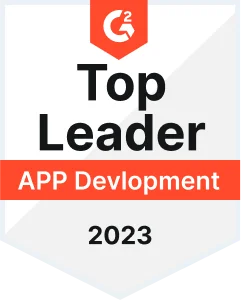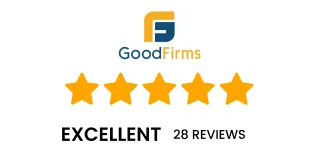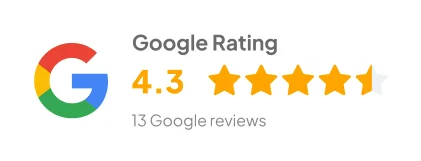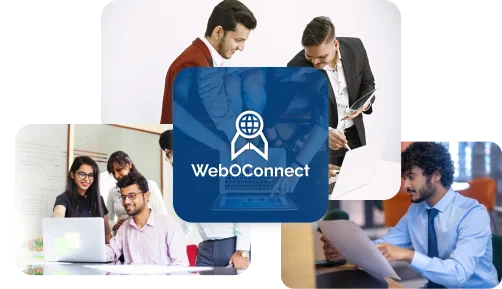Digital inclusion should be holistic, and digital accessibility is one of the many ways through which this could be achieved. Although captions have long been regarded as an important means of making content accessible to the deaf and hard-of-hearing communities, they are only part of the solution. Often, captions are accepted as a blanket approach to making programming accessible; however, it does not serve deaf users. For instance, a study found that while 80% of individuals with hearing loss have used closed captions, only 34% found them satisfactory.
Captions do not capture issues like the loss of context, real-time interaction issues, or the wider need for sign language support. Businesses and content providers that depend only on captions may unintentionally create an exclusion for a significant section of their target audience. It is not only detrimental from a user-centric perspective but also opens avenues for probable compliance risks or lost market opportunities.
This blog sheds light on the hurdles that users who are deaf experience with regard to access issues such as how captions are limited, and recommends how such companies can better act in making the digital space inclusive.
The Limitations of Captions: More Than Just Words on a Screen
Captioning is an important aspect of accessibility, but unfortunately, it has its limitations. Even the best captions can fail to capture the full meaning, emotion, or context of what is being said.
Inaccuracy: Where Captions Fail
Captions have one defect; the biggest of them all is inaccuracy.
- Auto-generated captions often contain errors that can misrepresent the speaker’s message. AI-generated captions, such as YouTube’s automatic captions, frequently struggle with accents, technical jargon, and fast speech, leading to incorrect or misleading text
- Capable human-generated captions may also fail precision. Although more accurate than professional captioning services, still quite a few fast-paced dialogue or live conversation sequences fall short evocation of relevance to the captions performance done by a professional.
For the deaf audience totally reliant on captions, these errors add up to a lot of confusion, frustration, and misinformation.
Lack of Context: Missing the Full Picture
Captions provide a transcript of spoken word but do not capture the richness and fullness of context.
- Background noise, tonal changes, and non-verbal signals are lacking, thereby losing meaning in the captions.
- Example: A dramatic pause, a sarcastic tone, or an emotional shift would change the utterance altogether without these extras, and normal captions usually don't do a very good job of providing any of this information.
All those signs of context are lacking and thus, might leave deaf persons more confused than channels are in communication with each other about Appalachian storytelling, comedy, and emotional performances.
Live and Interactive Content Challenges
Captions are even less reliable in live or interactive situations.
- There are real-time, high-quality captions missing in webinars and live broadcasts. When captions are available, the delays and inaccuracies make it very tough for deaf people to keep up with the broadcast events.
- Some platforms do not offer captions at all and completely exclude deaf participants from discourse.
Failing to provide real-time accessibility solutions can deprive companies that depend on virtual meetings, webinars, and live customer interactions from catering to a good-sized audience.
Beyond Captions: Key Accessibility Challenges Deaf Users Face Online
Even when captions are available, digital inaccessibility barriers still persist. Besides such simple text-based solving methods, deaf users face additional barriers.
Web and App Navigation Barriers
Most sites have not been designed for the deaf within them.
- Lack of sign language: Most websites do not provide sign language video content which can be tough for those who communicatively are using sign language.
- Audio-based navigational difficulties: Several digital platforms utilize either voice commands or audio cues without text-based substitutes for their functions.
These are some factors that can contribute in creating a challenge to deaf users in terms of online effectiveness.
Limited Communication Options
A lot of online environments do not offer any alternative communication resources for a deaf person.
- They are usually voice chatbots and do not provide options for text-based communication with customer support.
- Video conferencing without sign language interpretation is another barrier that hinders participation from deaf users in real-time interactions.
It is unreachable to the majority of deaf people, as lack of accessible communications would create third-party guys through which many deaf lose touch with some important works.
Exclusion from Social Media and Video Contents
Social media is a platform for people to communicate, but however, it is mostly not very accessible to everyone.
- It does not enable people to access user-generated video contents since some sites lack inbuilt tools for captioning.
- Even though there can be a deaf user taking part in the excitement of live interaction, such as Instagram Live or Twitter Spaces, the absence of real-time captioning or supporting sign language excludes deaf users from social engagement.
Accessibility is limited in these instances and, in consequence, social interaction has been hindered so that deaf users cannot fairly participate in the digital conversation.
Why Accessibility Matters for Businesses
Digital accessibility is no longer social employment; it has become compulsory business. Accessibility is the one beneficial concept with which all these sections of the business receive advantages under it.
Reach a Larger Audience
According to World Health Organization statistics, there are 466 million people who are deaf or hard of hearing in the world. Thus, with the accessibility of content, businesses will contact a broader audience and penetrate a potential market.
Avoid Legal Risks
Accessibility is not just an important concept, but it is also a legality.
- Legally digital compliance falls under the Americans with Disabilities Act (ADA) and Web Content Accessibility Guidelines (WCAG).
- Legal noncompliance leads to lawsuits, fines, and a bad reputation.
Several companies have been hit by prominent lawsuits that have dismantled their digital content for not being accessible.
Build a Better Brand
Increased Trust and Loyalty from Consumers for Inclusive Firms.
- Brands like Apple and Microsoft, which brands only have completed and to continue to invest heavily in making their programs more accessible to present a good example to others.
- Brands that are more socially responsible and less exclusive often gain consumer support.
Corporations will not only build reputations and a great user experience for their customers by promoting accessibility.
How WebOConnect Helps Build Truly Inclusive Technology
We at WebOConnect will go further than captions in developing inclusivity in digital solutions.
AI-Powered Accessibility Solutions
We offer innovative accessibility tools that improve Deaf users' digital experiences.
- Smart speech-to-text transcription with real-time accuracy.
- Interactive sign language integrations for websites and applications.
- Custom accessibility solutions on demand.
An AI-based accessibility solution creates an online environment in itself within which inclusiveness digitizes the business.
Case Study: Terp2Go - Real Time Signing Interpreting
Terp2Go is a real-time video sign language interpretation by WebOConnect that involves more than just captions, allowing seamless, dynamic communication for the deaf through live interpretation instead of a caption that usually lacks accuracy and context.
Companies are going to further their customers' using Terp2Go, offer workplace accessibility, and establish stronger ties with the deaf population.
Want to see how companies are leveraging Terp2Go for better accessibility? Read our complete case study to discover how your business can benefit.
The Future of Accessibility
What Comes Next for Digital Accessibility?
As technology evolves, new possibilities for accessibility and inclusion are also being created.
- Enhancements in AI technology for captioning will sharpen the accuracy and minimize errors in captioning.
- The development of sign language avatars and real-time sign language interpreting tools is reaching new heights.
- Increasingly more companies are now designing with accessibility as a priority.
What You Can Do
Digital accessibility needs a proactive approach.
- Evaluate accessibility gaps in your website and digital platform.
- Ensure that you implement better captioning and real-time sign language support with an inclusive UI design.
- Partner with WebOConnect to create holistic accessibility solutions. Accessibility is not a nice-to-have; it is a must-have.
Call WebOConnect today so we can co-create a more inclusive digital experience for all users.
Conclusion
Captions are good when it comes to accessibility, but they alone are not enough. Deaf users are left with barriers in the digital space, including wrong captions devoid of any sign language support or real-time communication options borne during the easement. A company that practices accessibility will enhance a user's experience but also reach a wider audience while minimizing risk and bolstering their brand.
In enhancing digital solutions, the organizations may, at least with a view to bridging the accessibility gap, co-create an inclusive digital world, with WebOConnect accessibility tools and Terp2Go being possible candidates.
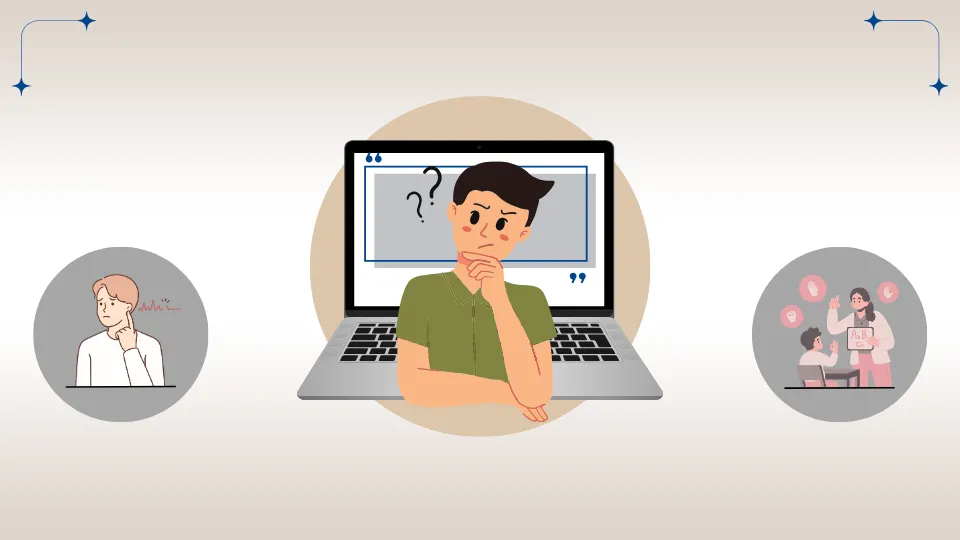
_thumb.webp)
_thumb.webp)
_thumb.webp)

_thumb.webp)


